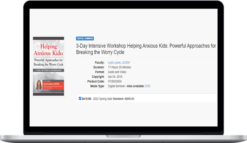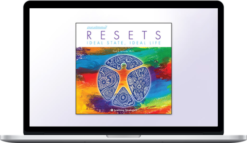Catherine Pittman – Calming The Anxious Brain
$179.00 $60.00
»Delivery: Within 24hs
Description
Catherine Pittman – Calming The Anxious Brain
The past decade has brought new understanding about the neuroscience behind anxiety and fear. But how many of us can communicate this knowledge to clients in a clear, engaging way that actually enhances effective treatment?
You don’t need to be a brain scientist to tap into the power of neuroplasticity and revolutionize your approach to treating anxiety. This workshop recording will explore brain-based techniques to stop the symptoms of anxiety, including panic attacks, rumination, and nausea.
What You’ll Learn In Calming The Anxious Brain
Objectives
- Use examples to illustrate how the anxious brain functions and how to use that information in session to improve treatment outcomes.
- Describe the role of the amygdala and cortex in maintaining anxiety disorders s for purposes of client psychoeducation.
- Explain how learning about the neuroscience of anxiety can improve client engagement.
- Use neurologically informed CBT techniques to help clients reduce anxious responding by making changes in both the cortex and the amygdala.
Outline
Introduction
- Disclosures
- Limitations
- Scope of Practice
- Learning Objectives
Using Neuroscience in the Treatment of Anxiety
- Neuroscience & Anxiety
- Neuroscience & Therapists
- Using Neuroscience to Enhance Client Engagement
- Treatment Goal Selection
- Neuropsychologically Informed CBT
- Neuroplasticity
- Reconsolidation
- Two Pathways to Anxiety
Understanding Anxiety in the Brain: The Amygdala Pathway
- Fight, Flight, Freeze
- Language of the Amygdala
- Triggers Created in the Amygdala
- Neuroplasticity in the Amygdala
- Amygdala-Focused Interventions
Understanding Anxiety in the Brain: The Cortex Pathway
- Relationship between the Cortex & Amygdala
- Neuroplasticity in the Cortex
- Cortex-Based Interventions
Target Audience
- Psychologists
- Physicians
- Addiction Counselors
- Counselors
- Social Workers
- Marriage & Family Therapists
- Nurses
- Other Behavioral Health Professionals
More courses from the same author: Catherine Pittman
Delivery Policy
When will I receive my course?
You will receive a link to download your course immediately or within 1 to 21 days. It depends on the product you buy, so please read the short description of the product carefully before making a purchase.
How is my course delivered?
We share courses through Google Drive, so once your order is complete, you'll receive an invitation to view the course in your email.
To avoid any delay in delivery, please provide a Google mail and enter your email address correctly in the Checkout Page.
In case you submit a wrong email address, please contact us to resend the course to the correct email.
How do I check status of my order?
Please log in to HealingCourse account then go to Order Page. You will find all your orders includes number, date, status and total price.
If the status is Processing: Your course is being uploaded. Please be patient and wait for us to complete your order. If your order has multiple courses and one of them has not been updated with the download link, the status of the order is also Processing.
If the status is Completed: Your course is ready for immediate download. Click "VIEW" to view details and download the course.
Where can I find my course?
Once your order is complete, a link to download the course will automatically be sent to your email.
You can also get the download link by logging into your HealingCourse account then going to Downloads Page.
Related products
Total sold: 2









